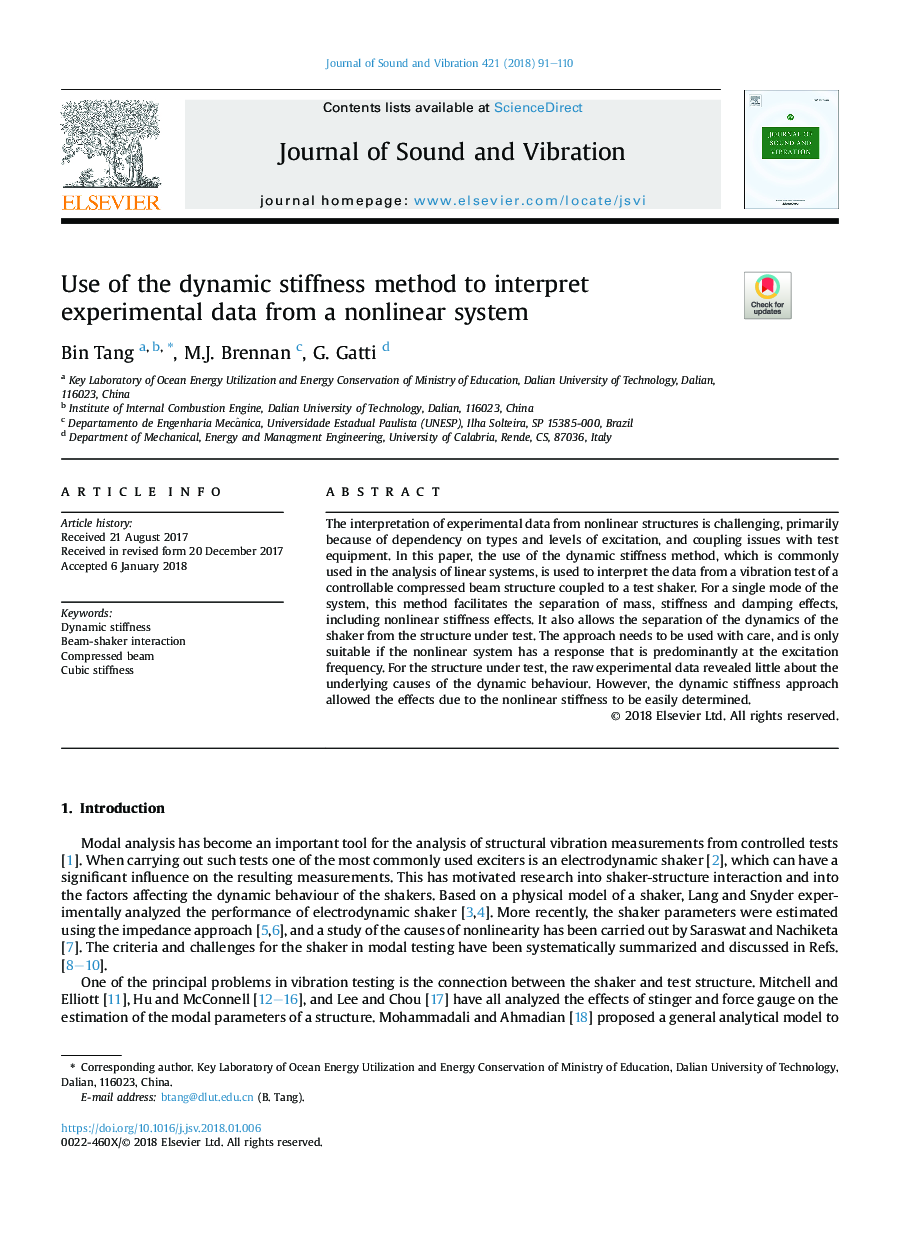| Article ID | Journal | Published Year | Pages | File Type |
|---|---|---|---|---|
| 6753456 | Journal of Sound and Vibration | 2018 | 20 Pages |
Abstract
The interpretation of experimental data from nonlinear structures is challenging, primarily because of dependency on types and levels of excitation, and coupling issues with test equipment. In this paper, the use of the dynamic stiffness method, which is commonly used in the analysis of linear systems, is used to interpret the data from a vibration test of a controllable compressed beam structure coupled to a test shaker. For a single mode of the system, this method facilitates the separation of mass, stiffness and damping effects, including nonlinear stiffness effects. It also allows the separation of the dynamics of the shaker from the structure under test. The approach needs to be used with care, and is only suitable if the nonlinear system has a response that is predominantly at the excitation frequency. For the structure under test, the raw experimental data revealed little about the underlying causes of the dynamic behaviour. However, the dynamic stiffness approach allowed the effects due to the nonlinear stiffness to be easily determined.
Keywords
Related Topics
Physical Sciences and Engineering
Engineering
Civil and Structural Engineering
Authors
Bin Tang, M.J. Brennan, G. Gatti,
